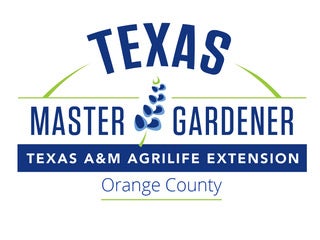Master Gardeners: Fight stickers, weeds with fall, winter lawn management
Published 12:43 am Saturday, October 24, 2020
|
Getting your Trinity Audio player ready...
|
Adapted from Adam Russell Texas A&M AgriLife Extension Service and Texas Gardener’s Seeds online newsletter
In July, I wrote an article on summer weeds. Now is the time to talk about the wintertime weeds and what we should do to “attack” them so they will not get out of hand this coming spring. As soil temperatures cool, planning for preemergence herbicide applications to eradicate common cool-season weeds like annual bluegrass and lawn burweed is now.
Chrissie Segars, Ph.D., AgriLife Extension turfgrass specialist, Dallas, said applying the correct preemergence herbicides now to lawns will disrupt the germination and emergence of unfavorable plants in the spring.
Preemergence herbicide treatments in the fall can help rid your lawn of grassy weeds like annual bluegrass, rescuegrass, broadleaf weeds like henbit, chickweed, Carolina geranium and lawn burweed. You should always read and follow product labels and distance applications from desirable plants to avoid injuring them. Those not comfortable handling or applying chemical products should contact local landscape professionals.
Preemergence active ingredients are an important consideration for tackling unwanted weeds. Products will typically list a range of plants it will control whether perennial, annual, broadleaf plants or grasses. Preemergence herbicides are most effective on annual weeds, while other weeds must be controlled with post-emergence applications.
Having knowledge of seasonal, chronic weed problems will help you narrow down product choices. Choosing the right active ingredient for your problem weeds and applying it correctly are very important to weed management.
AgriLife Extension recommends the fall preemergence herbicide regimen to begin when soil temperatures reach approximately 70 degrees. This recommendation is commonly based on annual bluegrass – a weed that germinates when soil temperatures are below 70 degrees. This generally falls in September or October, depending on where you are in Texas. Using a soil temperature probes, even probe-type meat thermometers, can help homeowners gauge application timing.
Environmental conditions can be drastically different from year to year. Some weeds will germinate later in the season but applying products in a timely manner builds up a preemergence program that stays ahead of weeds.
Identifying which weeds you want to control is important for choosing the correct herbicide option, such as broadleaves, grasses, perennial or annual weeds. Segars recommends granular herbicides for homeowners due to ease of application.
For best results, we generally recommend at least one application of a preemergence herbicide in the spring and fall. These two applications, if done properly, can greatly reduce the number of annual weeds in your yard.
Herbicides aren’t 100% effective every time, especially if you have heavy rains following application or missed the desirable timing. Having a mixture of a pre- and post-emergence product just ensures you catch any weeds that break through your original application while they are immature.
Watering in the preemergence herbicide immediately after application using some type of sprinkler system is recommended. Typically, granular preemergence products need one-quarter to one-half inch of water to dissolve properly, but always follow product label instructions, she advised.
It’s easy to water in the product, especially if you have an in-ground irrigation system. It could be risky trying to time it with rainfall. So, Segars recommends using a sprinkler and figuring out how much water it is putting out and how long you’ll need to water to correctly activate the herbicide.
Say ‘no’ to weed and feed in the fall
Weed and feeds are a common and popular product, but Segars does not recommend using them as a fall/winter turfgrass management tool.
We’re entering a time when warm-season grasses are slowing down and we don’t want to fertilize them too late, especially with nitrogen. Putting nitrogen down promotes growth, and a quick freeze could cause damage.
The last nitrogen application should be no later than four to six weeks before the average date of the first frost.
Turfgrass needs adequate soil moisture going into winter, but as temperatures fall, homeowners should dial back on irrigation.
Approximately 1 inch of water per week is AgriLife Extension’s summer turfgrass irrigation recommendation for actively growing grass. But as fall nears, rains should be enough, and allowing grasses to visibly wilt before supplemental water applications is a good rule of thumb.
If we are receiving typical fall rains, you can turn the system off or just water as needed until the grass goes dormant. You don’t want to overwater, but you also want to have some moisture in the soil, especially in areas that experience hard freezes. Having some moisture in the ground will help protect them from winterkill and sustain them through winter.
Now is a good time to scout for summer weeds like crabgrass and sandburs. Sandburs are a warm-season perennial grass known for their spiked seed pods that grow at the end of the stem and drop or attach themselves to any human or animal passersby.
Spring preemergence applications typically start when soil temperatures reach around 50-55 degrees, which can be January to March based on location and weather conditions.
Make note of what weeds you have now and prepare for spring preemergence application. Identify the weeds you have and note where they are. Make a game plan for getting your warm-season grasses off to a good start in the spring.
Call our Hot Line for your questions at 409 882-7010 Tuesday and Thursday’s 10 a.m. – 2 p.m. or email ocmg1990@gmail.com.






